Northeastern professors tackle major redesign of Charlesgate, the neglected ‘clasp’ of the Emerald Necklace park system
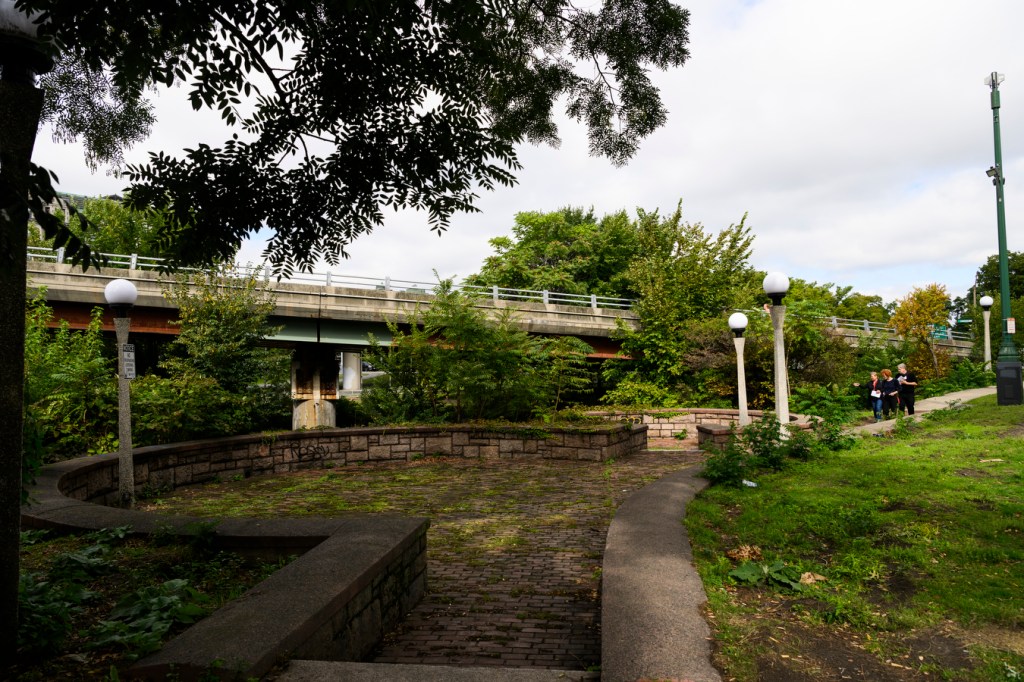
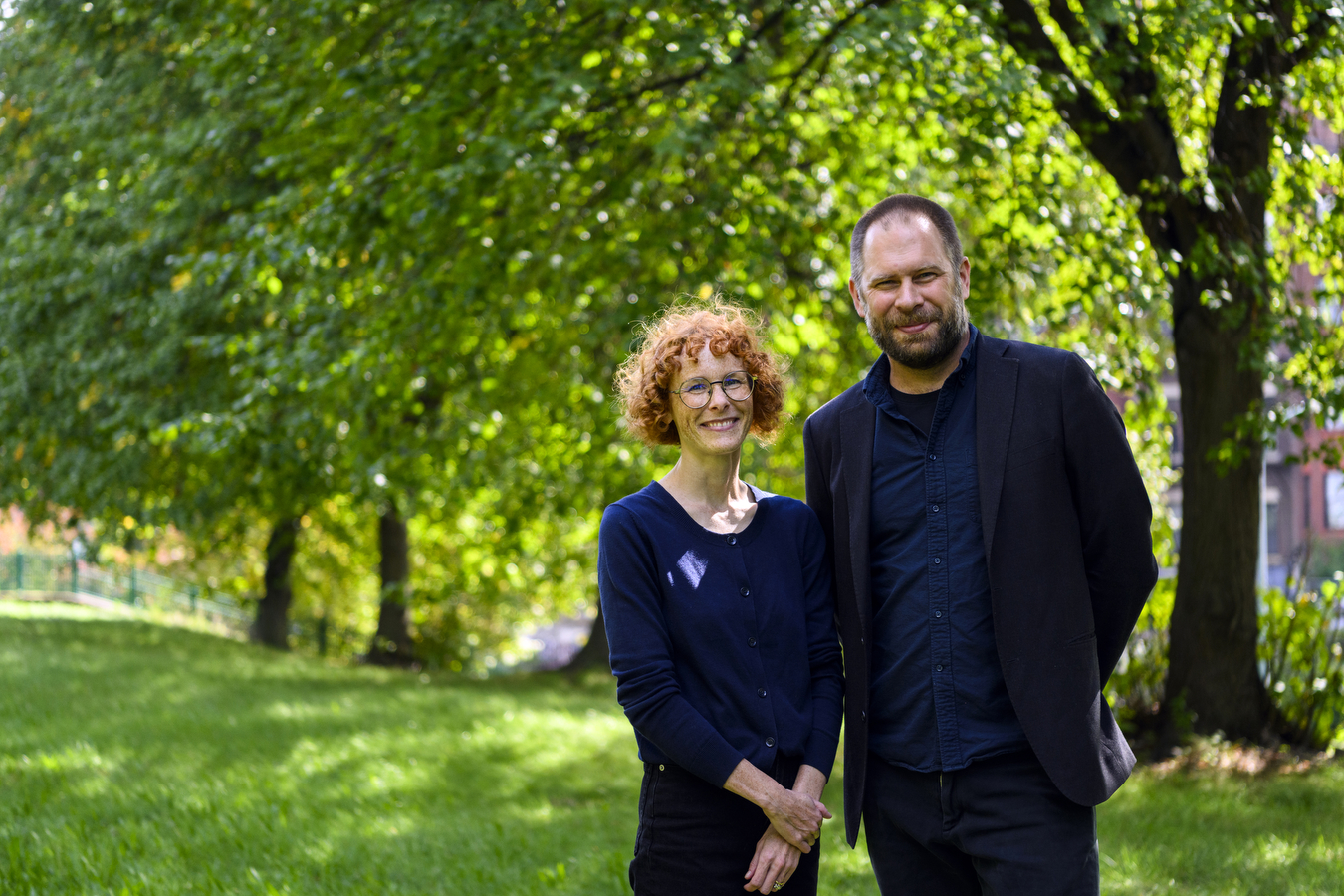
Once the clasp linking Boston’s famed Emerald Necklace of parks, Charlesgate Park currently bears more of a resemblance to a neglected urban lot than the grand entrance to the 7-mile strand of green space designed by Frederick Law Olmsted in the 1880s.
Hemmed in by roadways without crosswalks, shadowed by the Bowker Overpass and exposed to stagnant pools of water that make up the once free-flowing Muddy River, Charlesgate leaves a good deal to be desired as either a destination spot or a safe passage for pedestrians and cyclists.
“It used to be gorgeous. It used to have ponds and riverways,” says Karen Mauney-Brodek, president of the Emerald Necklace Conservancy. “This is one of those places we’ve really needed to fix.”
The monumental task of designing the renovation is largely in the hands of Northeastern University architecture professors Dan Adams and Marie Law Adams, husband and wife partners in the Landing Studio design firm in Somerville.
The vision calls for relocating roadways, removing granite walls, planting 500 trees and building double-wide bridges at both ends of the park to create a green corridor that starts by the Esplanade and connects Charlesgate Park to the Back Bay Fens.


Charlesgate Revitalization Plan
It also calls for “daylighting” the Muddy River that meanders through sections of the Emerald Necklace and freeing it from a 300-foot culvert on its western point.
Adams and Law Adams have been working on the redesign since 2017 in partnership with the Emerald Necklace Conservancy, Esplanade Association and the Charlesgate Alliance. The project will cost about $195 million and is expected to take about 10 years to complete.
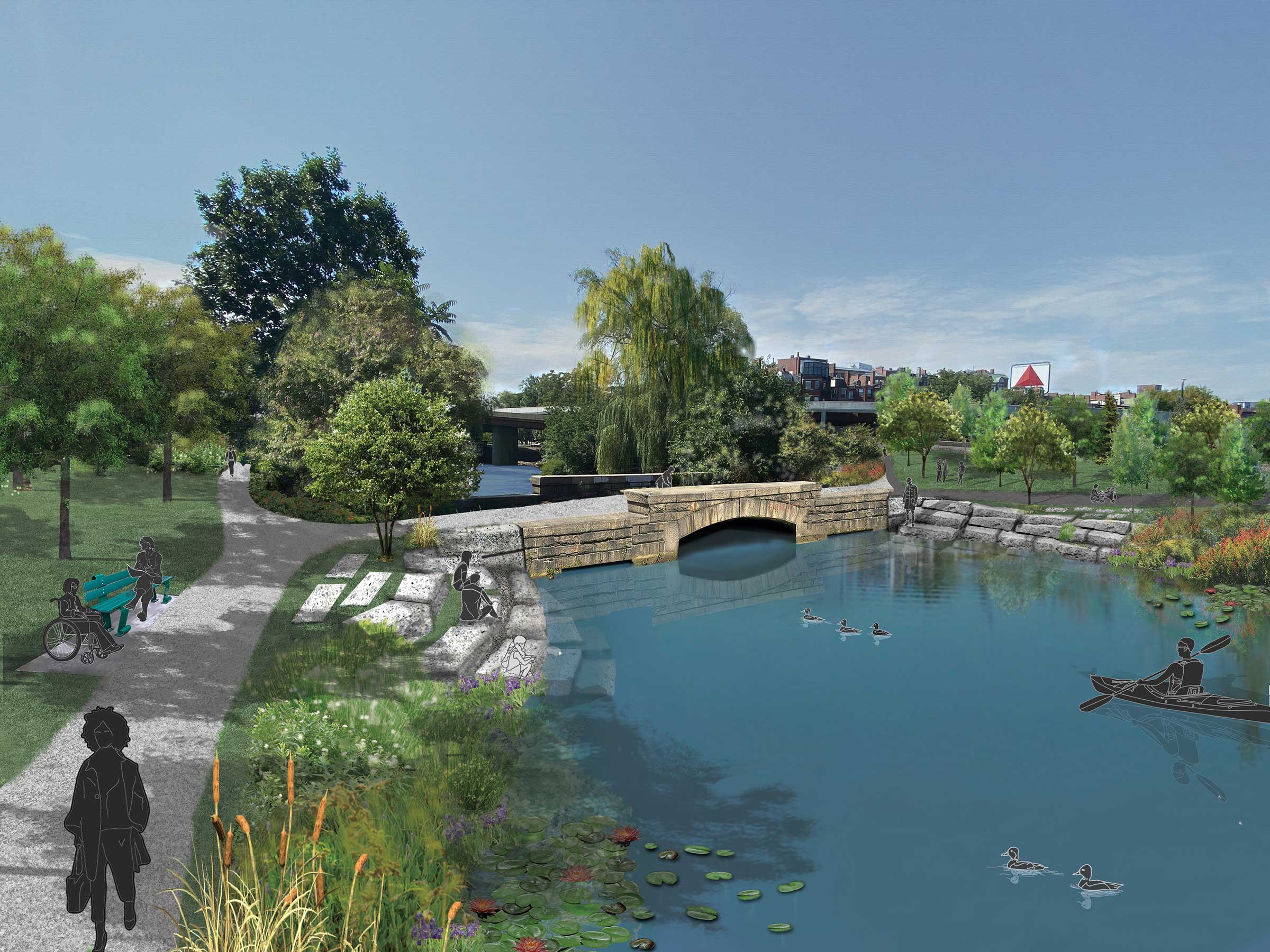
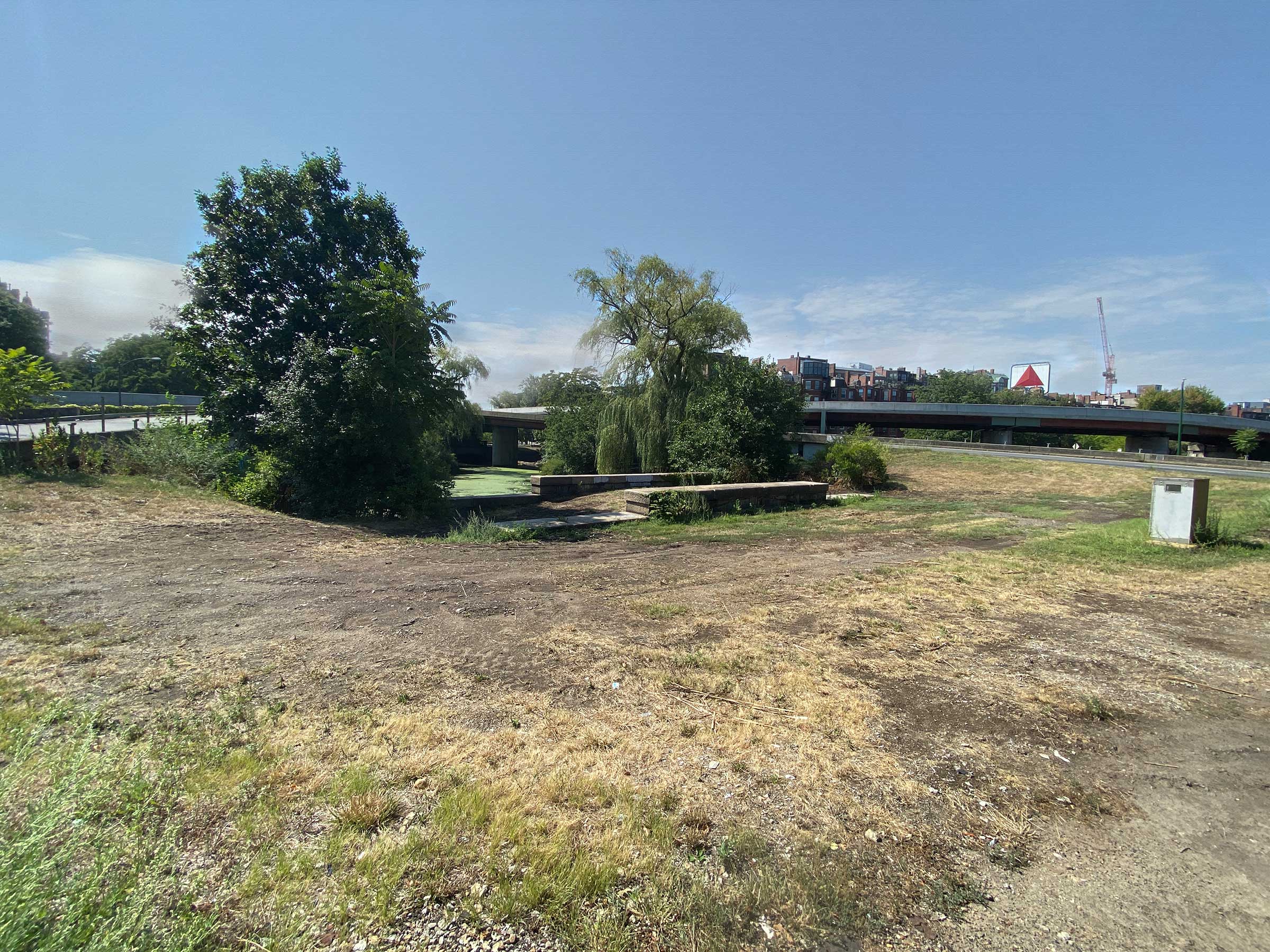
Daylit Muddy River & the Fens Pond Bridge
On a recent September day, the architects stood on the broken bricks of a tiny plaza under the Bowker Overpass by Beacon Street and pointed out a teasing glimpse of the Charles River. That river marked the western boundary of Charlesgate Park before highway construction in the 1950s and 1960s broke the link.
“You can stand here and you can see the Charles River and you cannot get there,” Adams says.
Restoring the connection calls for relocating and elevating the ground level section of Storrow Drive West that stands between Charlesgate Park and the Charles River and removing a culvert containing the Muddy River to allow its mouth to flow directly into the Charles River.
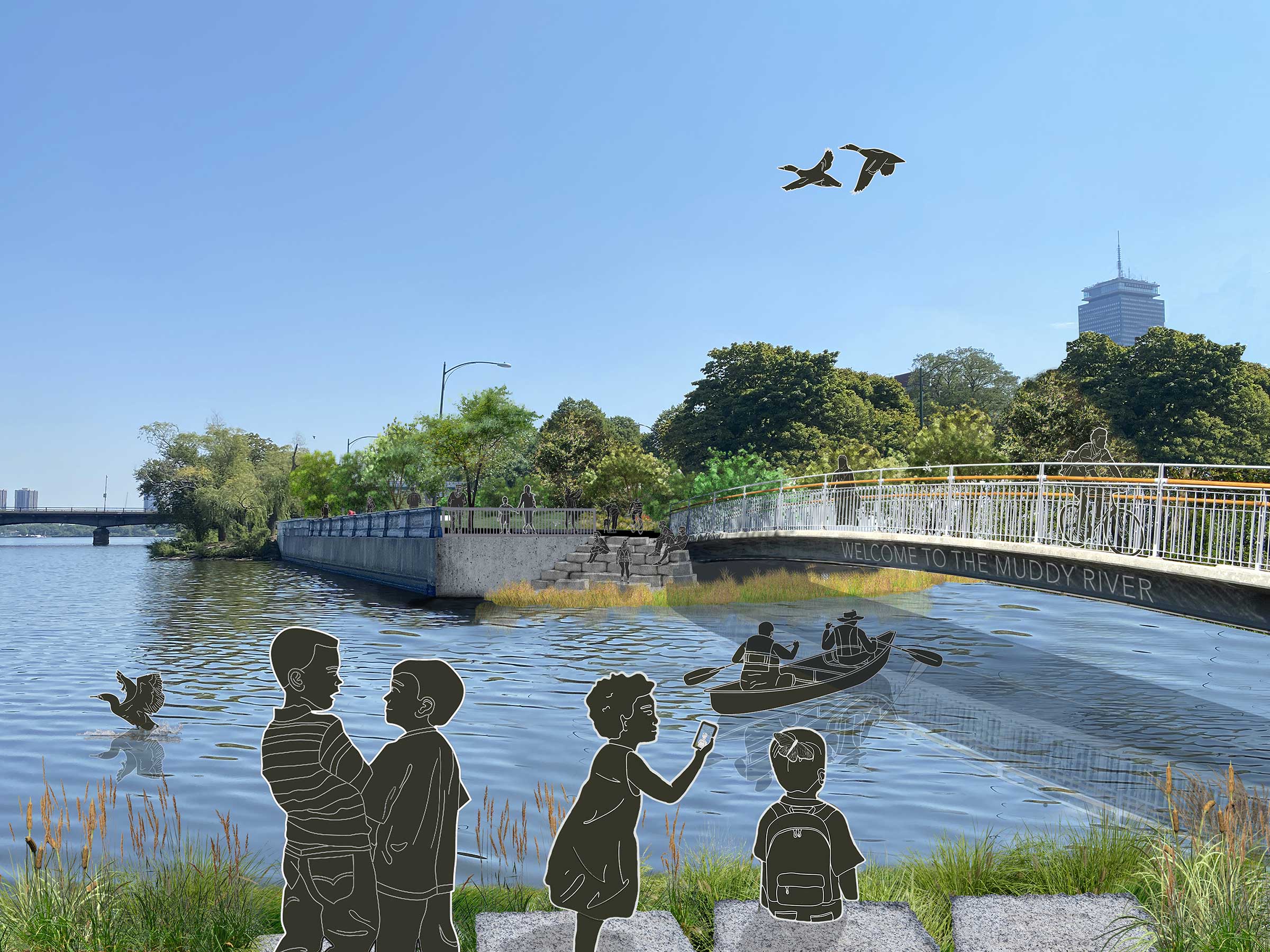
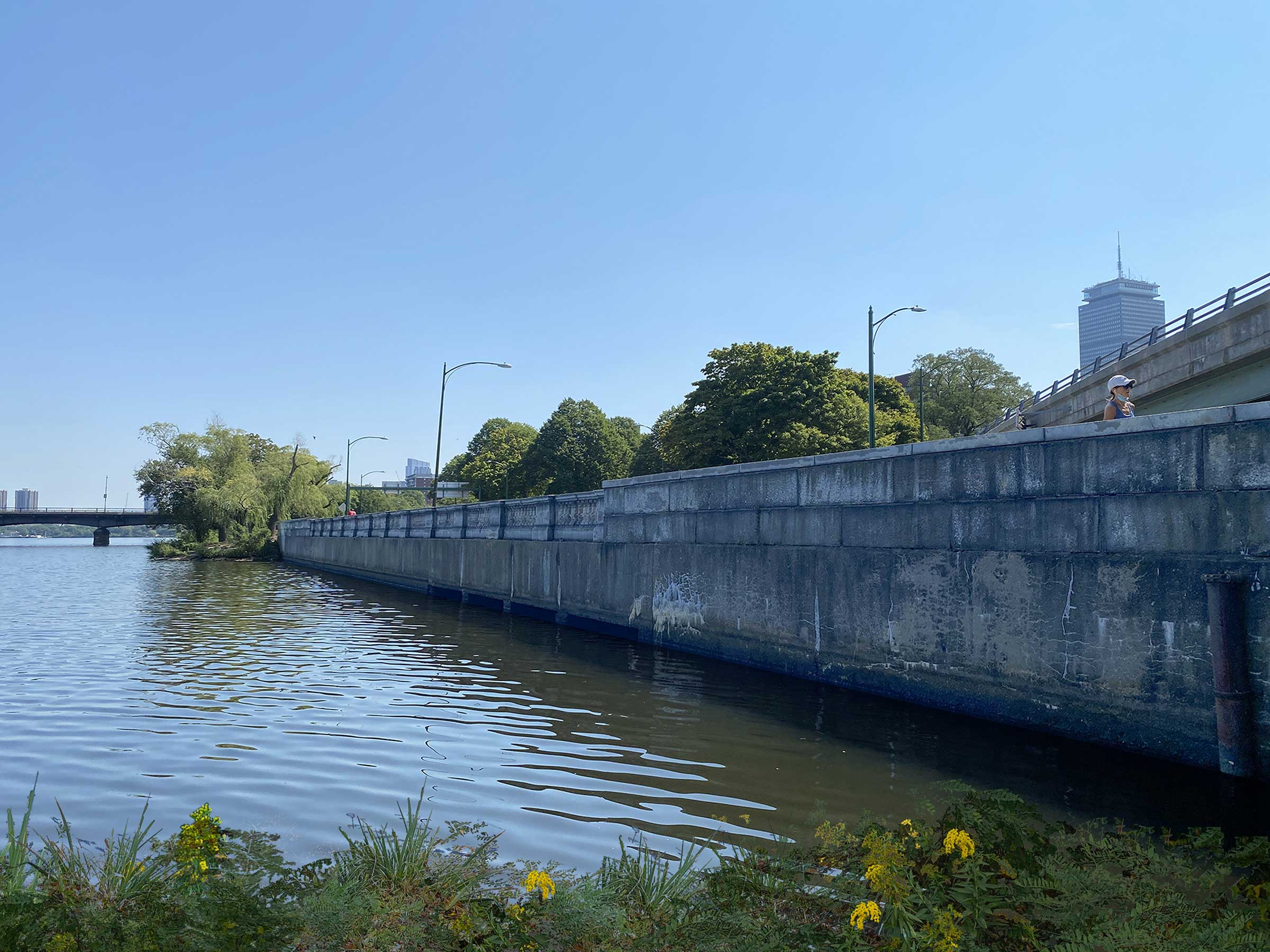
Daylit Mouth of the Muddy River at the Charles River
“This will be the only location in all of Boston where you can walk without using a pedestrian bridge between the main city and the Esplanade,” Law Adams says.
“Storrow Drive will go up and people will stay at grade. So they can walk between Charlesgate Park and the Esplanade.”
Re-engineering plans for Storrow Drive West call for making it a parallel bridge with Storrow Drive East, which already is elevated in the Charlesgate area.
Dan Adams says the transformation also will make what is currently the thinnest part of the Esplanade into its widest section.
For that to happen, the architects plan to add a footbridge across the Muddy River that will maintain the continuity of the Esplanade and provide access to a hillside section of lawn that overlooks the Charles River and will connect to the Mass Ave. bridge.

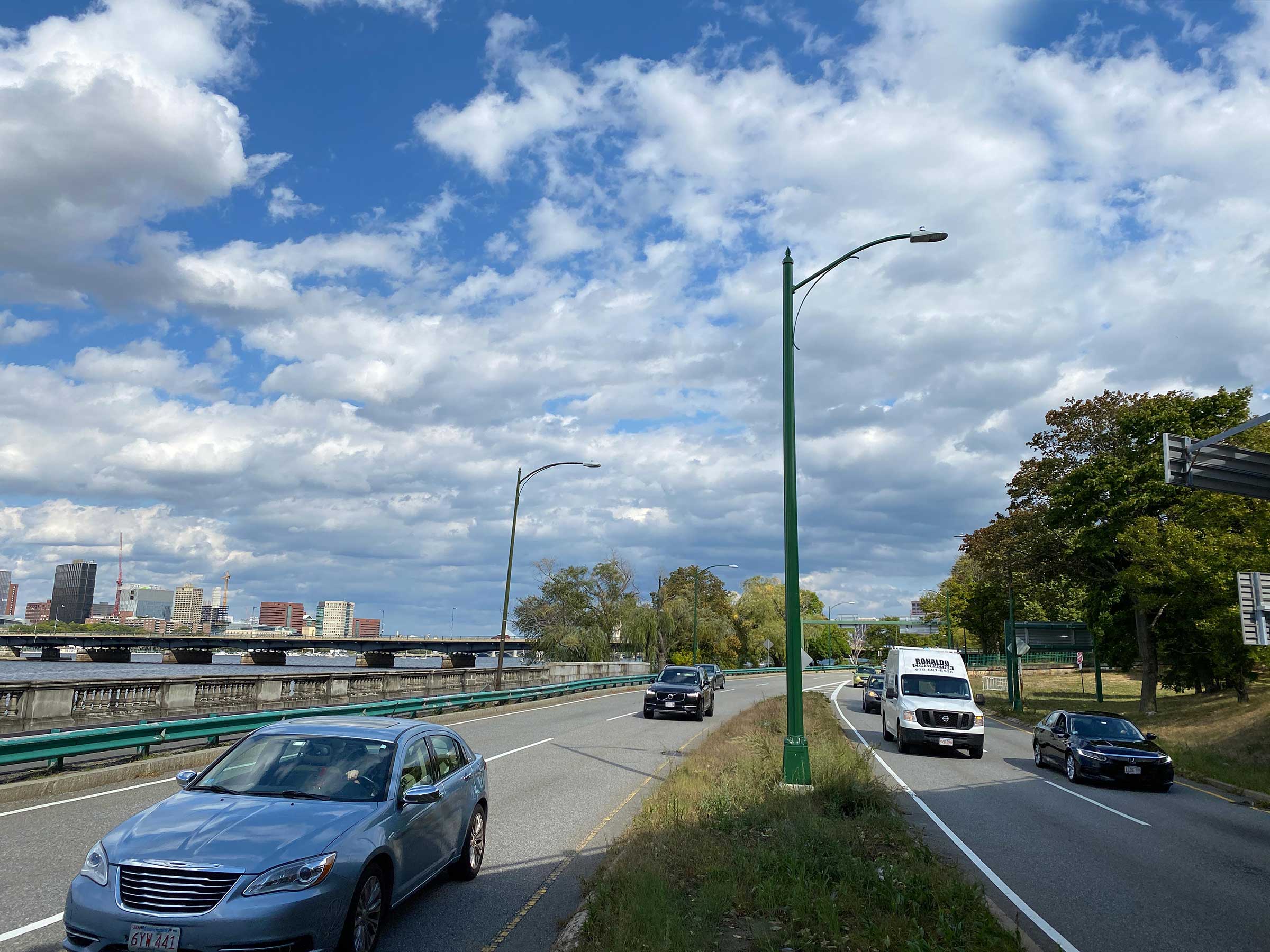
Esplanade Bridge Across Daylit Muddy River

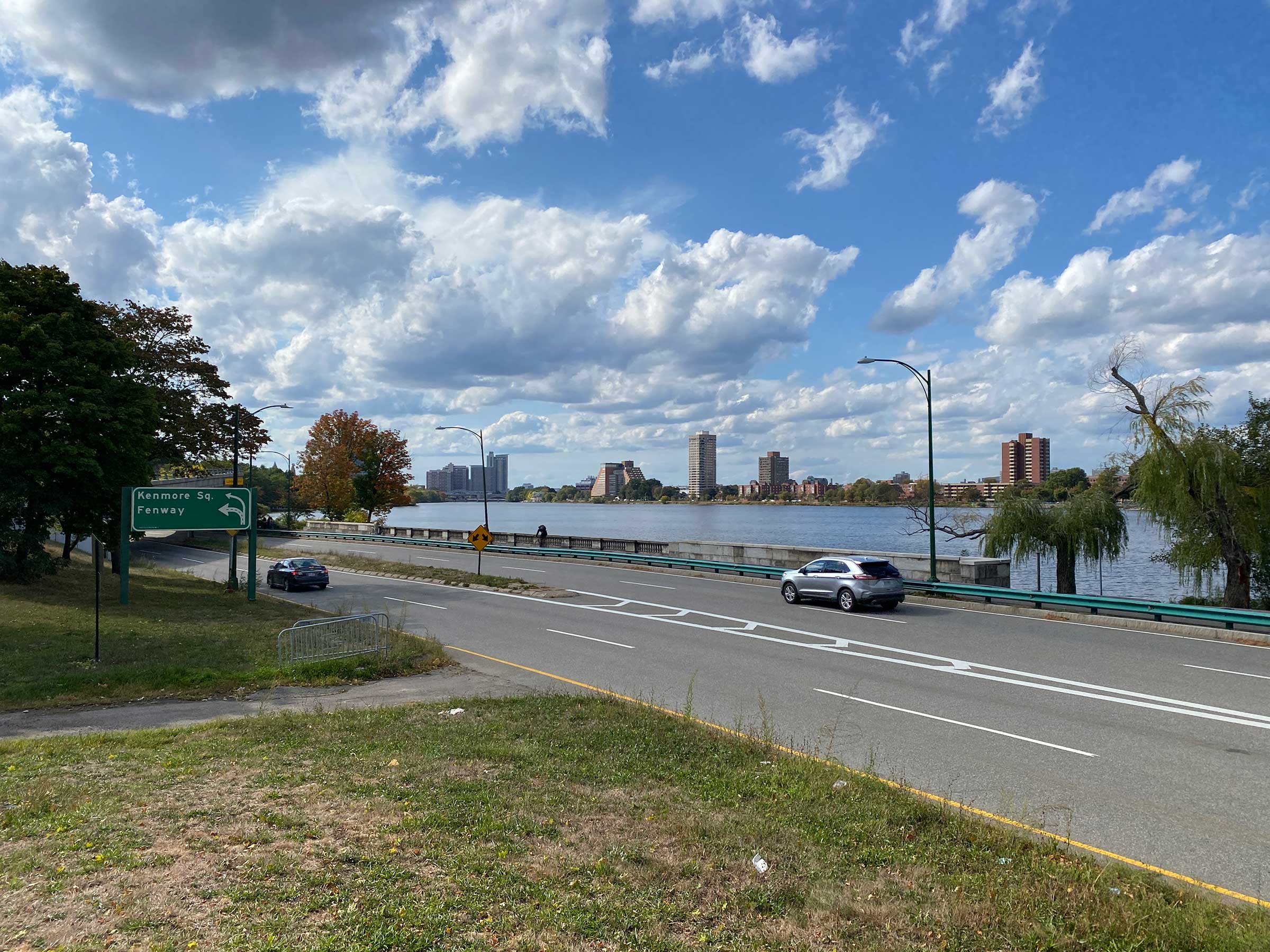
Esplanade Field Overlooking Charles and Muddy Rivers
As of now, the hilltop lawn, already shaded with a double row of small leaf linden trees, “is a trapped median in between roads,” he says.
“This is so unique in the middle of the city,” says Parker James, co-founder of the Charlesgate Alliance, pointing to views from the lawn.
James says it’s the best place in Boston to view the sunset over the Charles River. “I feel like people are going to love this.”
At the other, eastern, end of Charlesgate, the idea is to transform the Bowker Bridge over Interstate 90, which connects the park to the Fens, into a double-wide environmentally friendly passageway, with highway traffic on one side, local traffic on the other and trees, plants, and pedestrian and bike paths in between.
‘We want to make it a green bridge,” James says, adding that the original stone bridge that crossed over the railroad tracks now running parallel to the turnpike was twice as wide as the current bridge.
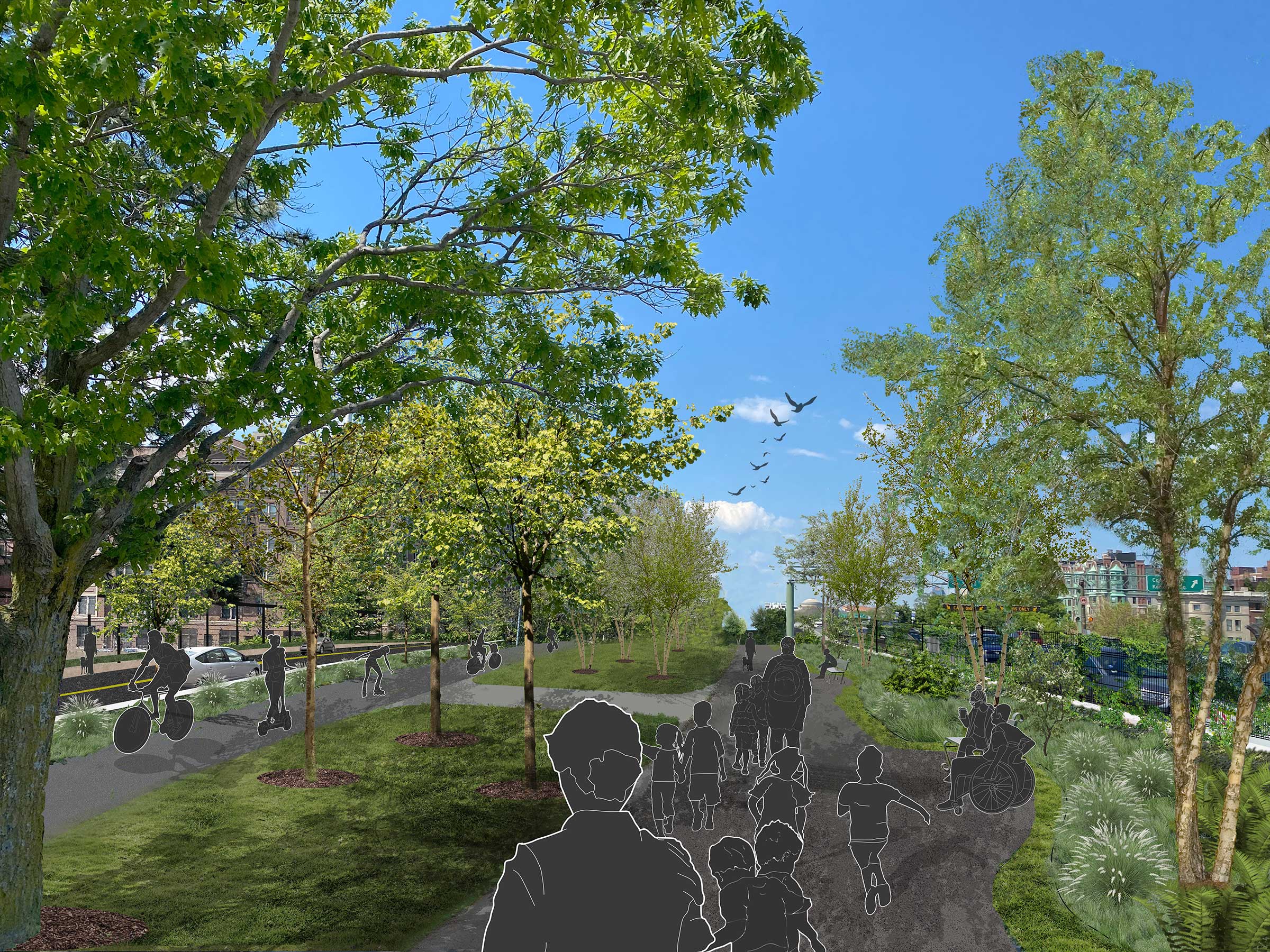
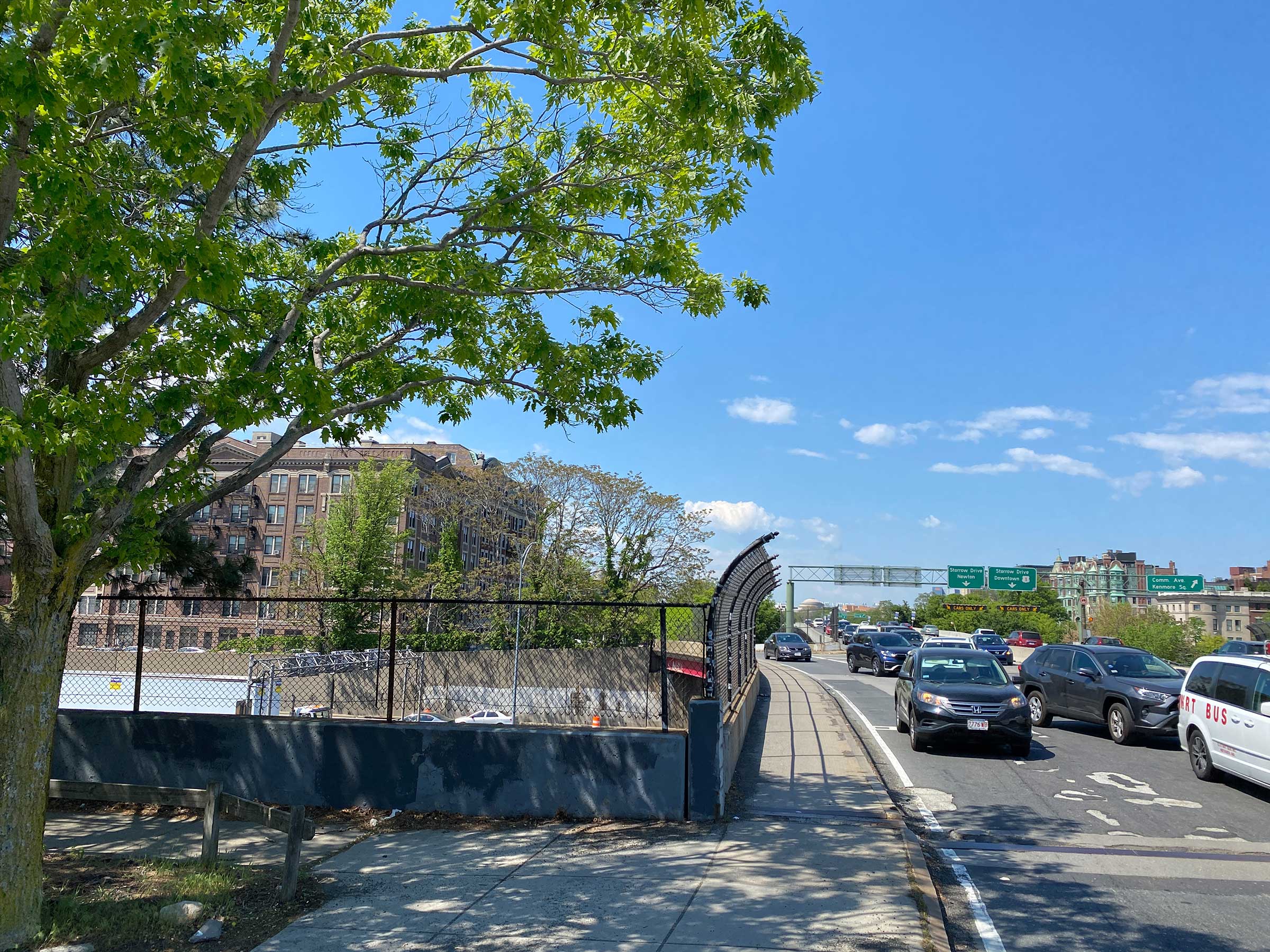
Emerald Necklace Bridge over I-90
There are also plans in place to improve connections between Charlesgate Park and the adjoining Commonwealth Avenue Mall by adding crosswalks and creating curb cuts. The mall, in turn, leads to Boston Common and the Public Garden.
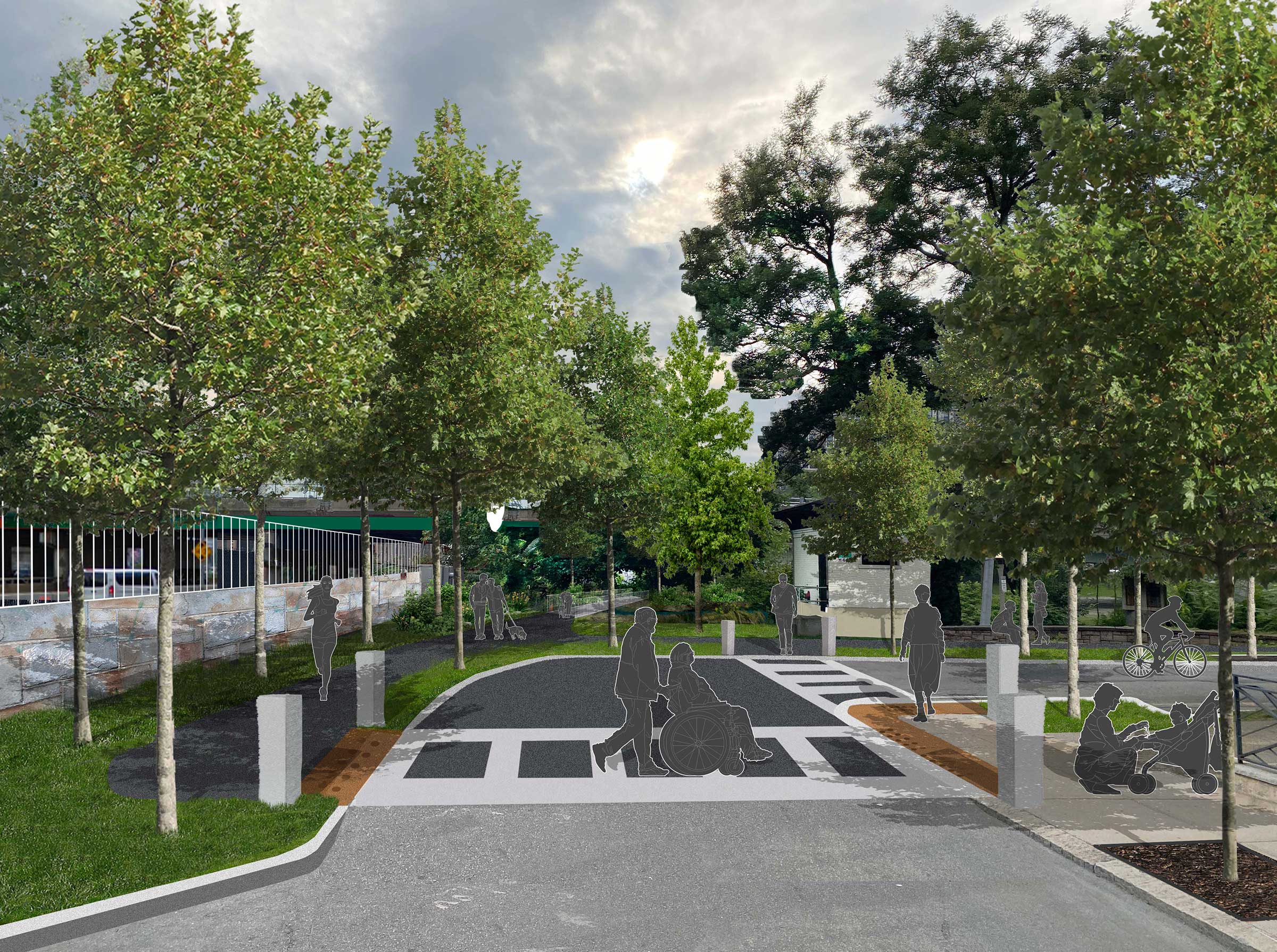
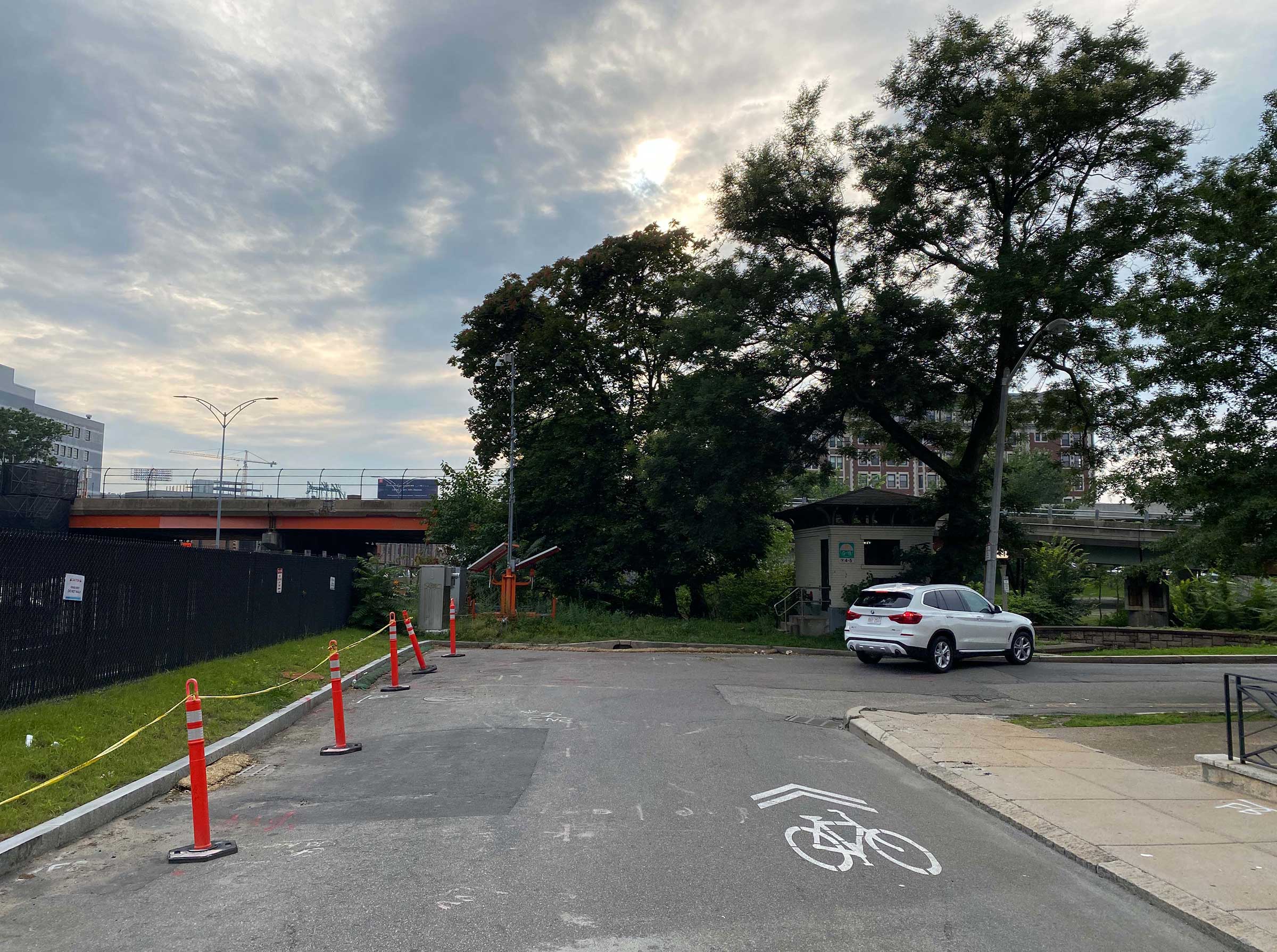
Pedestrian Entrance to Charlesgate at Newbury Street and Charlesgate East
Improvements in the middle of the park also call for removing non-structural granite walls that block views and tying disconnected sections of Newbury Street together with a footbridge over the Muddy River, allowing access to Kenmore Square.
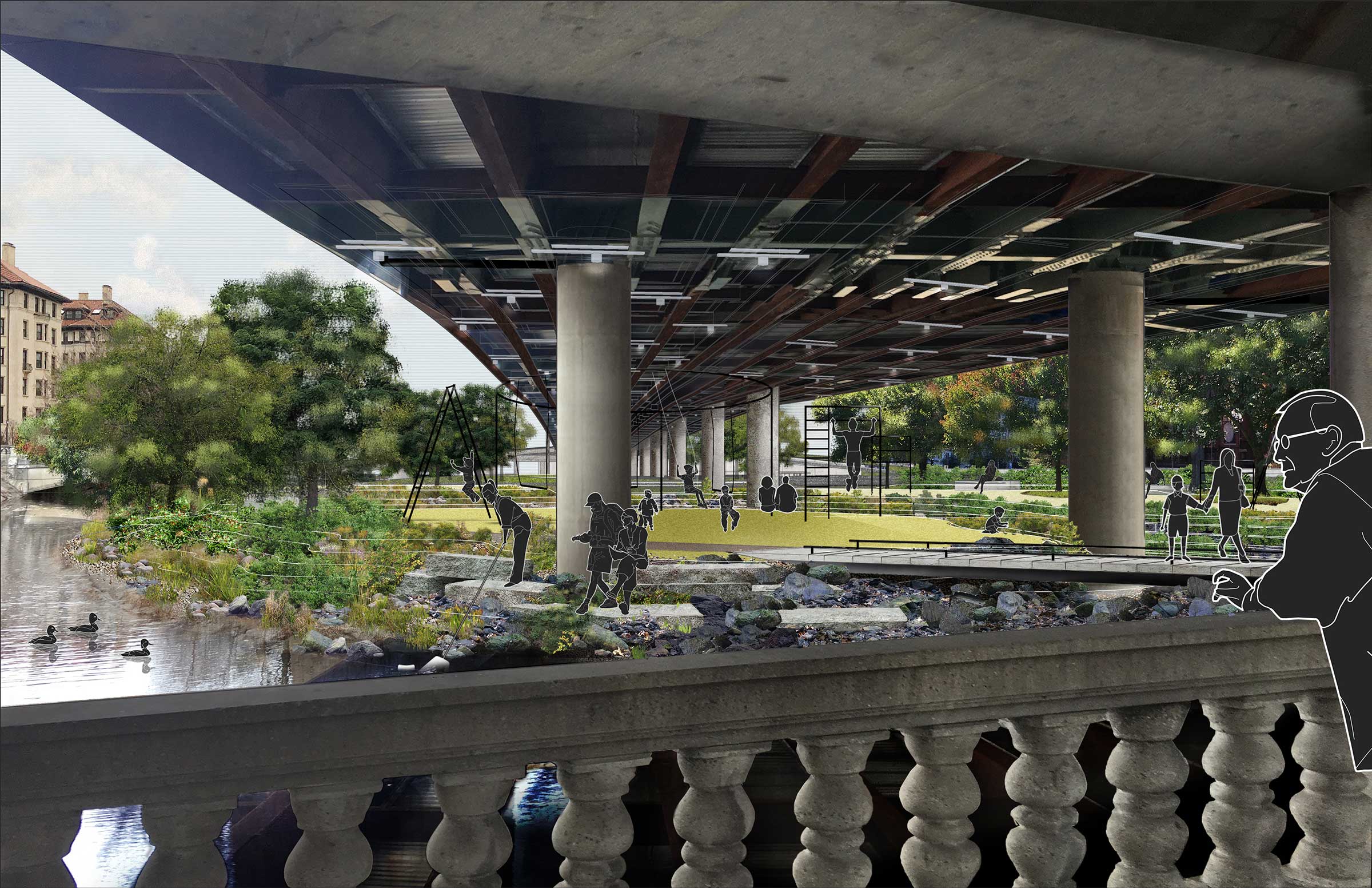
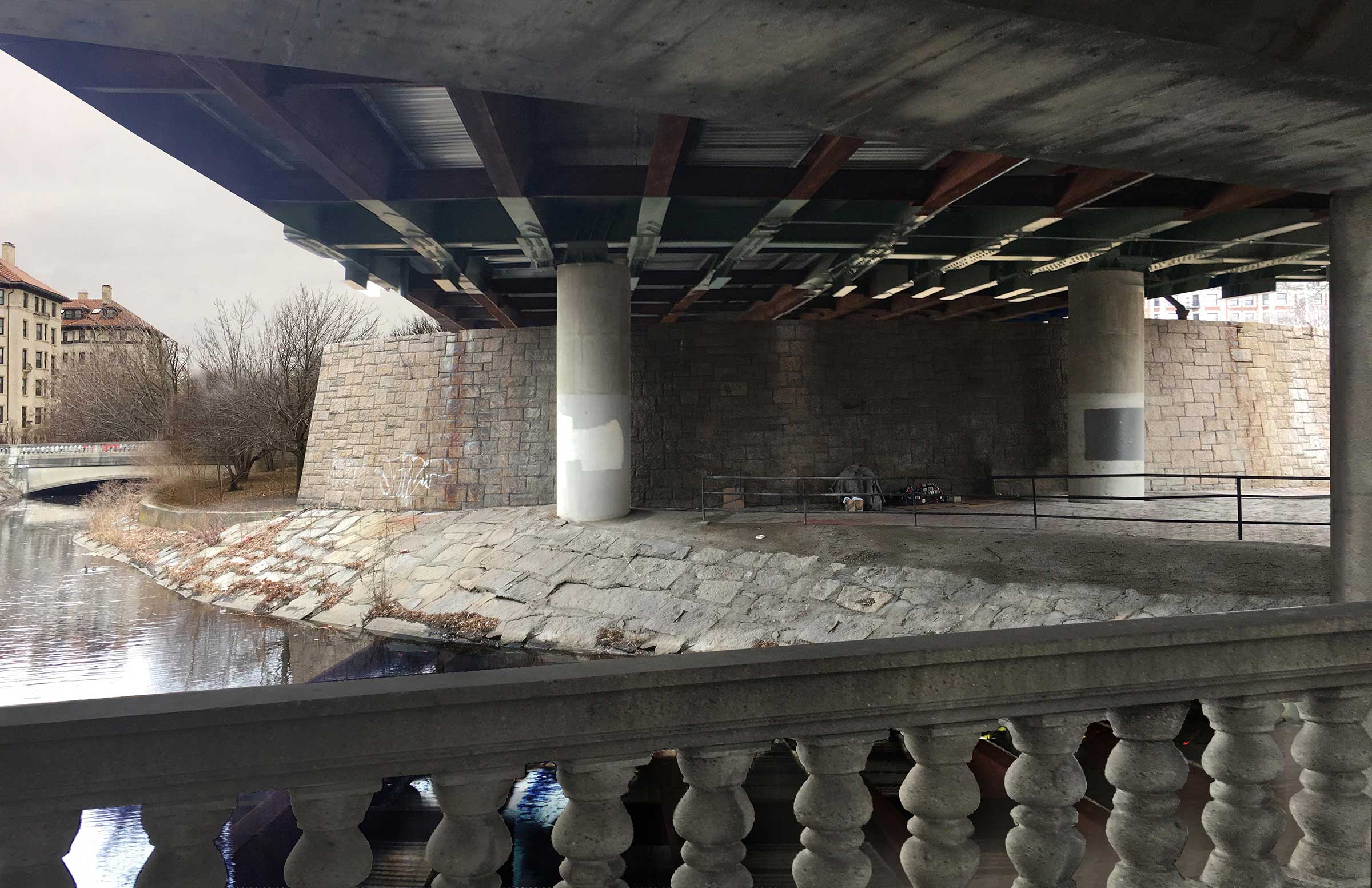
North Field Playground, Wall Removal, and De-armored Shoreline
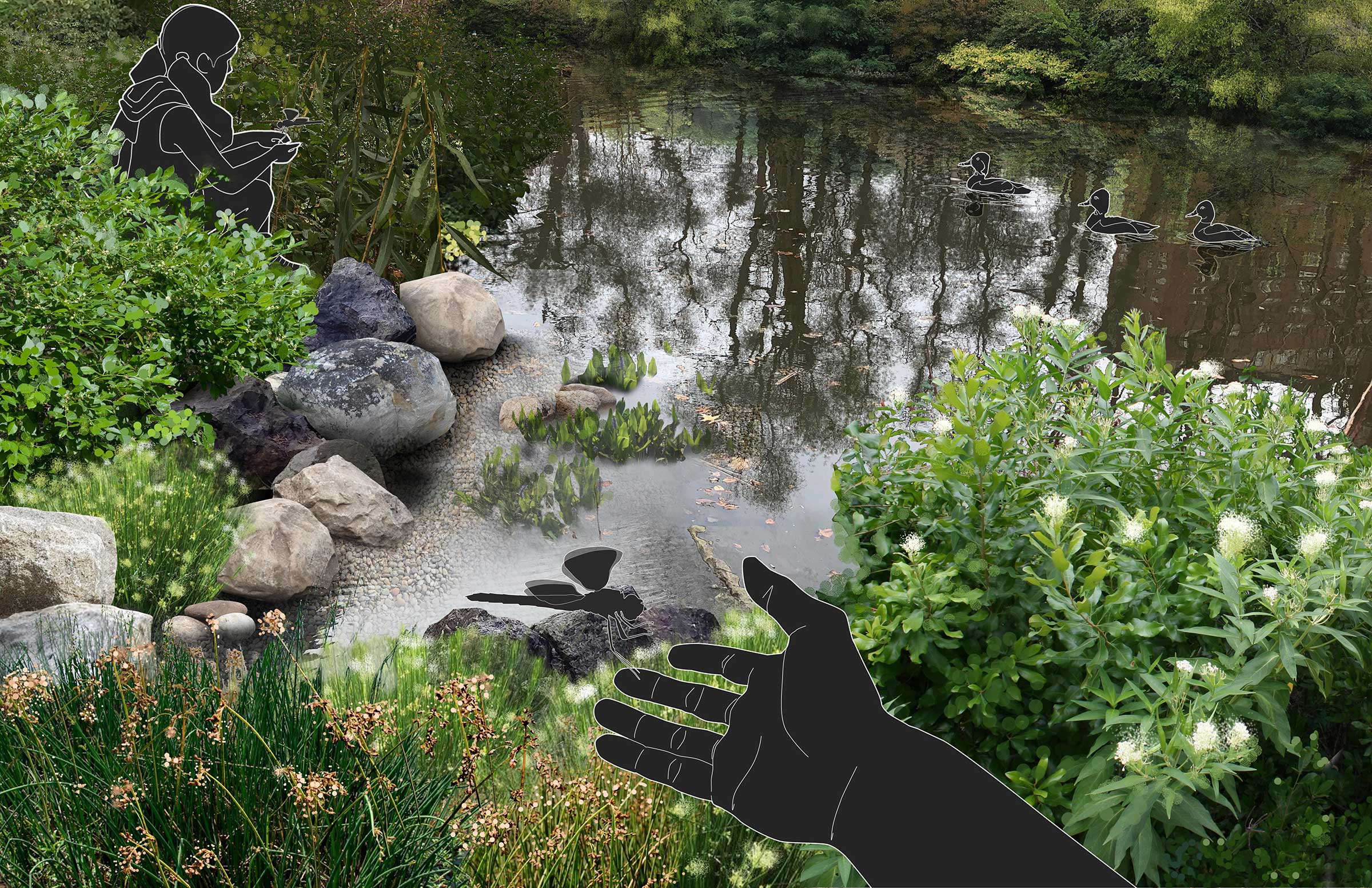
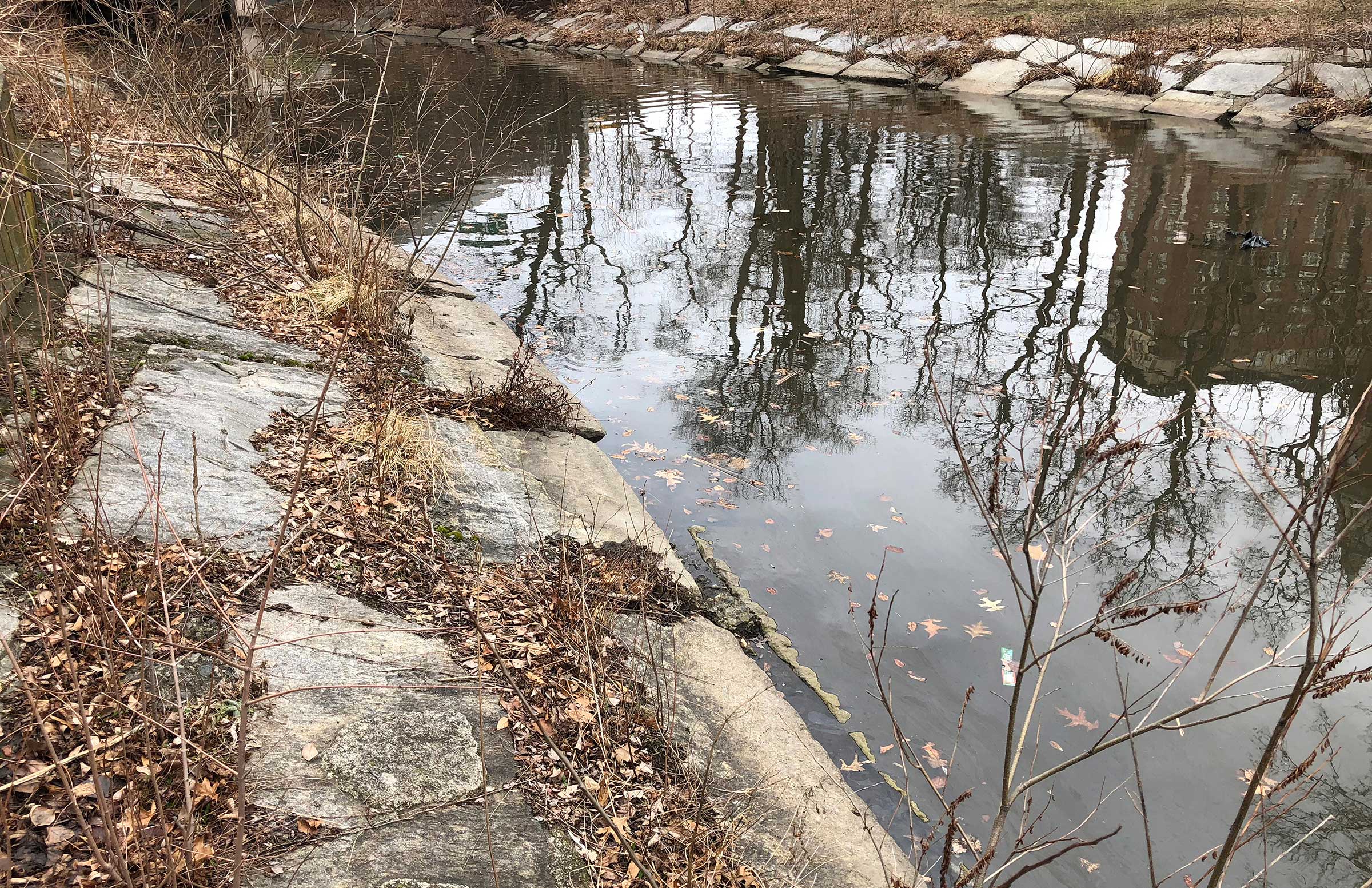
De-Armored Shoreline at Charlesgate
Unlike New York City’s Central Park, Olmsted’s most famous creation, the Emerald Necklace is not a discrete park but a series of green spaces extending from Charlesgate Park to Franklin Park in Roxbury, Dan Adams says.
In the 1950s and 1960s, the construction of Storrow Drive and the Bowker Overpass “broke those relationships,” Adams says. “People could no longer move along the rivers. People could no longer be in the shade of the trees because it was consumed by roads.”
Adding a tree canopy to offset urban heat island effects is one of the first design concepts being put in action at Charlesgate, with 15 of 500 planned trees planted in June.

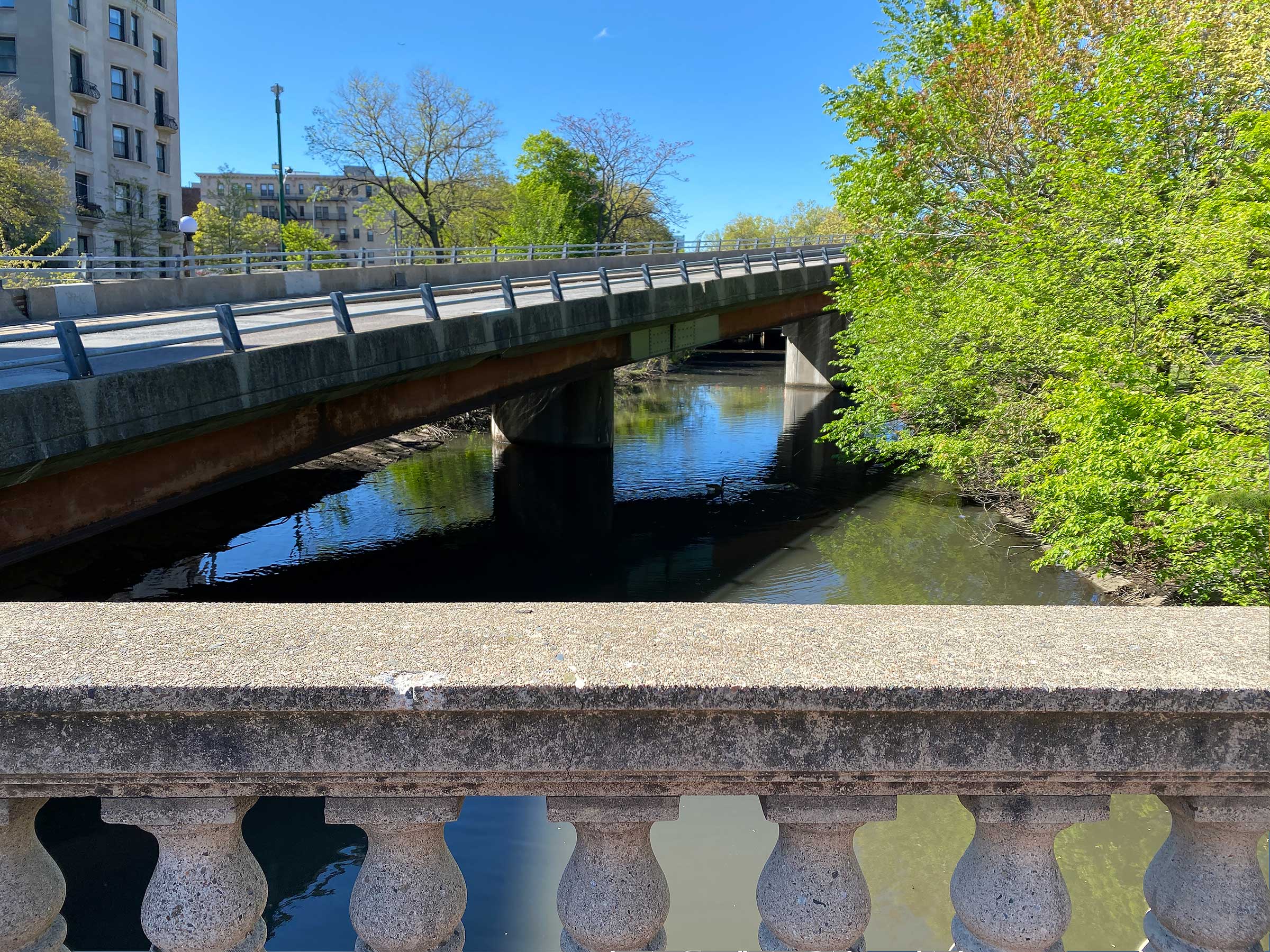
Charlesgate East Off-Ramp Removed
The first big infrastructure project will be the replacement of the aging Bowker Bridge over I-90, Adams says. He says Massachusetts Department of Transportation, which has allocated $160 million for infrastructure improvements around the Charlesgate area, is in the design process and aims to break ground by 2024 or 2025.
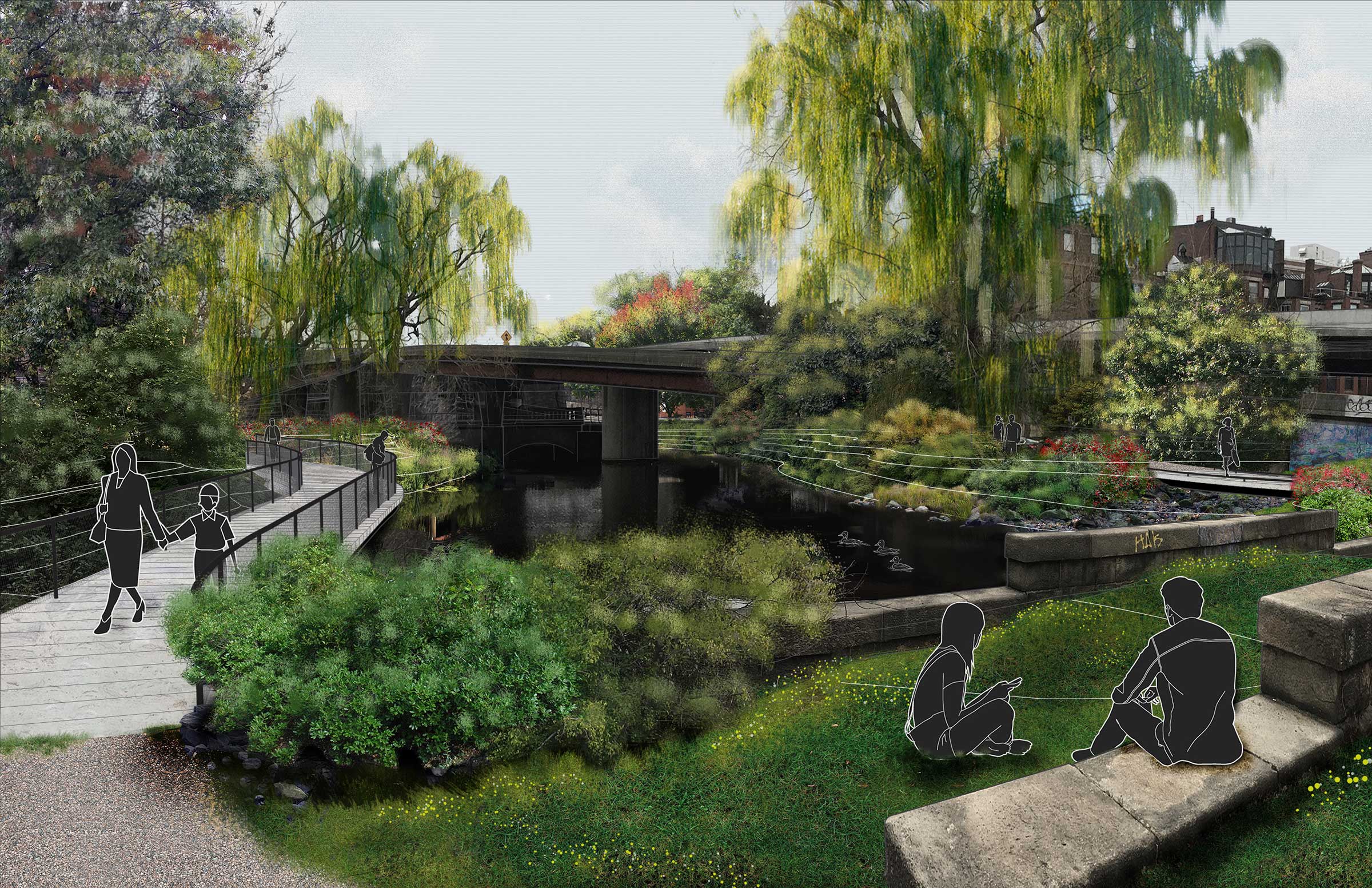
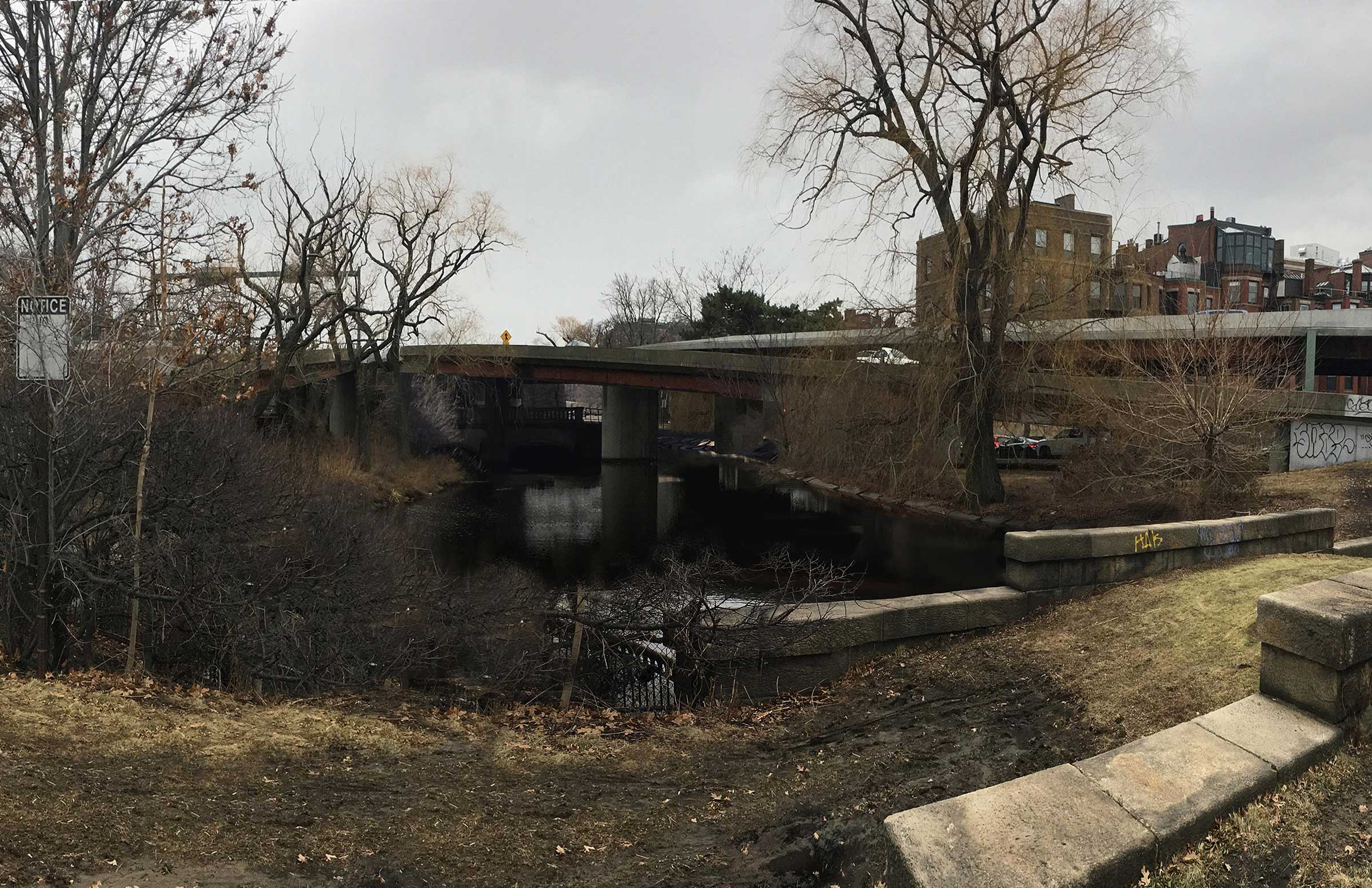
Charlesgate Bowl and Bridge
The reconfiguration of Storrow Drive West will come later, likely around 2027, Adams says.
Charlesgate Park takes up 13 to 18 acres, depending on various interpretations.
“It’s a very complicated tangle of roadways, parks and jurisdictions,” including the state Department of Conservation and Recreation, Adams says. “ It’s like a mess of tangled extension cords.”
In addition to replacing aging roadways, the park renovation also calls for using plants and trees in rain gardens to filter road runoff, in place of gray infrastructure like a pipe that goes directly from the Bowker Overpass into the Muddy River.
“I didn’t know what green infrastructure was until I started working with Marie and Dan. They are in the vanguard. They were years ahead,” James says.
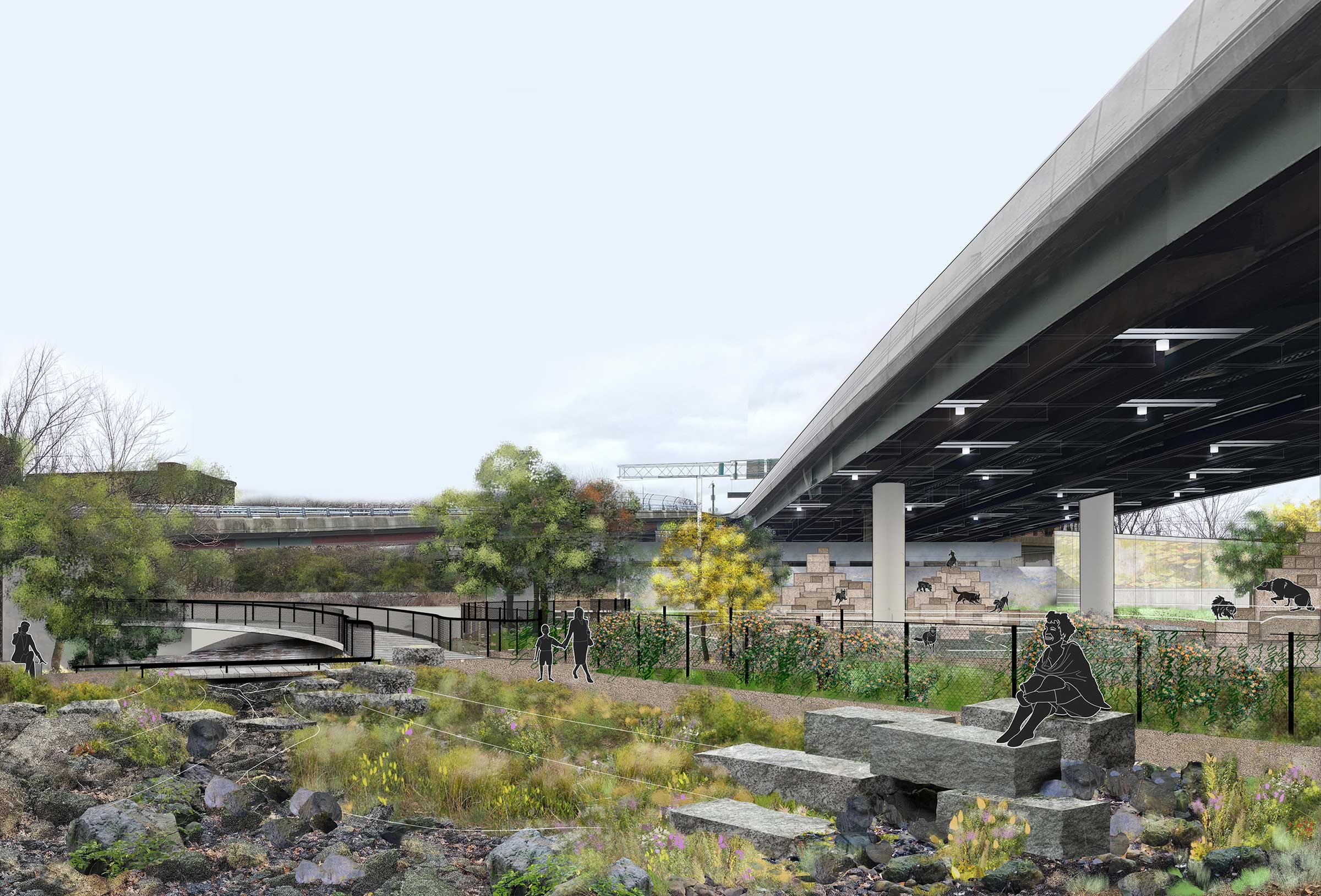
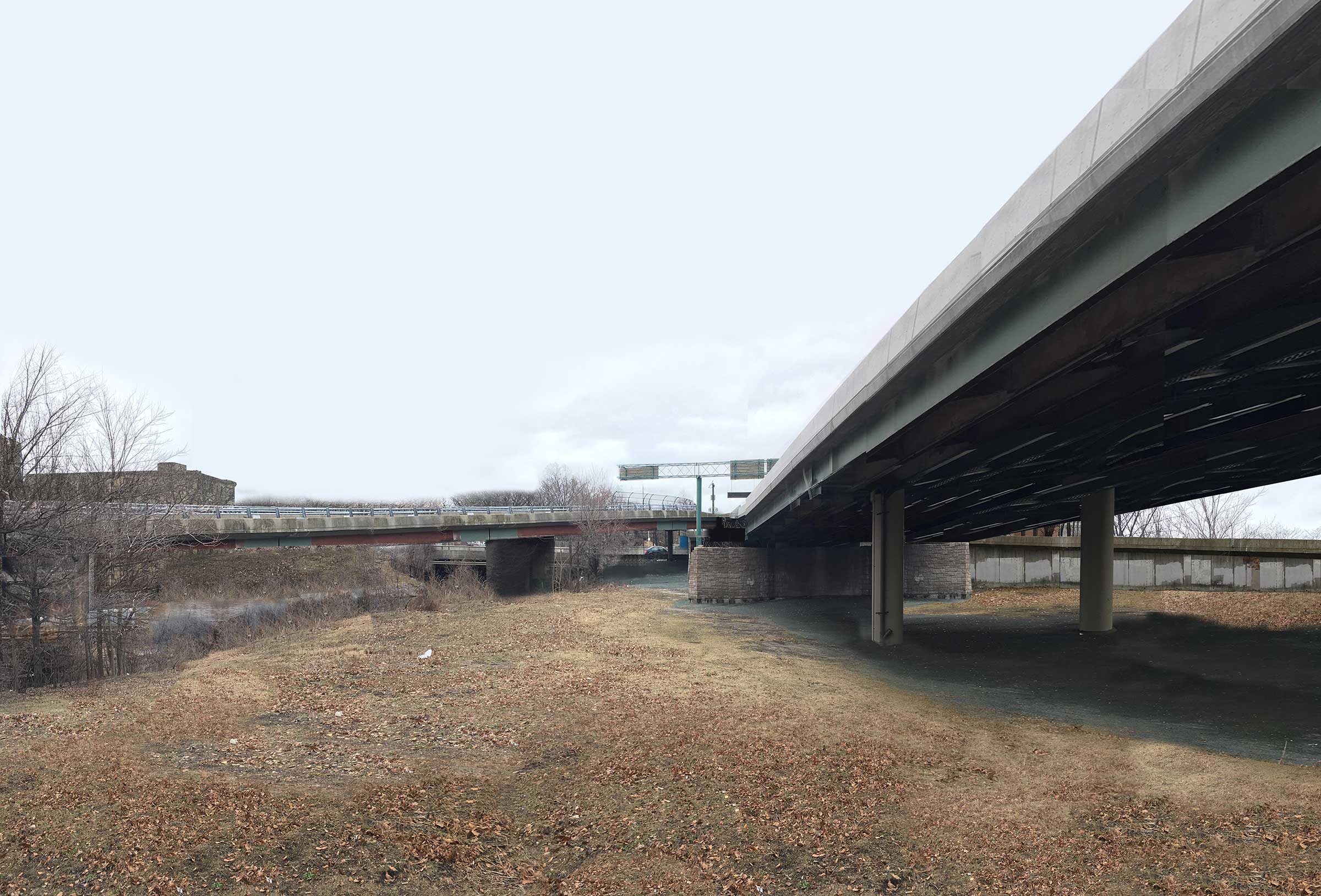
South Field Bio-Retention, Ped/Bike Bridge, and Dog Park
Dan Adams is director and associate professor of the School of Architecture at Northeastern University, which Marie Law Adams joined as associate professor this fall.
“I’m really excited to be joining the faculty at Northeastern. I’m so familiar with the campus,” having worked on Richardson Plaza improvements in the past, says Law Adams, who previously worked at MIT.
James points out that when the Charlesgate Park renovations are complete in 10 or so years, Northeastern students will be able to hop onto the Emerald Necklace at Forsyth Street and walk all the way to the Charles River in green spaces that adjoin the Muddy River.
“A lot of residents don’t see the Muddy River in this area as an amenity because it’s something you can’t sit and enjoy,” Law Adams says. “After these projects, it will be restored as actual parkland for people.”
Olmsted, Mauney-Brodek says, “would be really happy.”
For media inquiries, please contact media@northeastern.edu.






